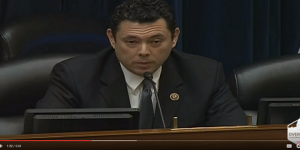The Supreme Court will hear a test case from Texas over equitable redistricting in cases where large numbers of non-voters skew the overall effect of American voters.
Legislators in Texas redrew state legislative districts after the 2010 census to reflect the changes in population. Eventually, the districts were drawn according to total population without regard to number of actual registered voters.
The plantiffs argue that districts with large numbers of ineligible voters violate the principle of one person, one vote.
This is now the focus of a lawsuit which the Supreme Court has just decided to hear in its upcoming session.
Titus County GOP chairwoman Sue Evenwel and Edward Pfenninger of Montgomery County sued Gov. Perry in 2014 after he signed into law a revised redistricting plan, the product of protracted back and forth disputes between lawmakers, the state, the Justice Department and federal courts. That plan, based on a map approved by the courts, put roughly the same number of Texans in each district.
But Evenwel and Pfenninger, sued because they say that lawmakers should only balance the number of resident in each district that are eligible to vote. Otherwise, voters in areas that have higher percentages of residents who are not eligible to vote have more clout.
The 5th Court of Appeals sided with the state and granted summary judgement to Texas. However, the case was appealed to the high court and the Supreme Court decided to review the lower court’s judgement.
The dispute turns over the vast number of ineligible persons in many districts in Texas. This can be read as large numbers of both legal and illegal immigrants. The American Enterprise Institute illustrates the problem:
In each of the 31 senate districts in Texas there are about 811,000 people, but there are wild disparities in the number of people per district who actually have the legal right to cast a ballot.
For example, in Sue Evenwel’s mostly rural district, about 584,000 citizens are eligible to vote. In a neighboring urban district, only 372,000 citizens are eligible. As a result, voters in the urban district have more sway than in the rural district; their individual electoral preferences carry more weight.
This imbalance violates a bedrock constitutional principle: the one-person, one-vote tenet articulated by the Supreme Court in a series of cases, the first of which was Reynolds vs. Sims. In that 1964 decision, the justices put an end to Alabama’s practice of allowing each county to have one senator in the Legislature. The old system had resulted in the voters of sparsely populated rural counties having disproportionately more senate representation than heavily populated urban counties.





























[…] alien voting has become a much larger issue since the Supreme Court agreed to hear a case from Texas which charges redistricting using total population (including illegal aliens) dilutes the votes of […]